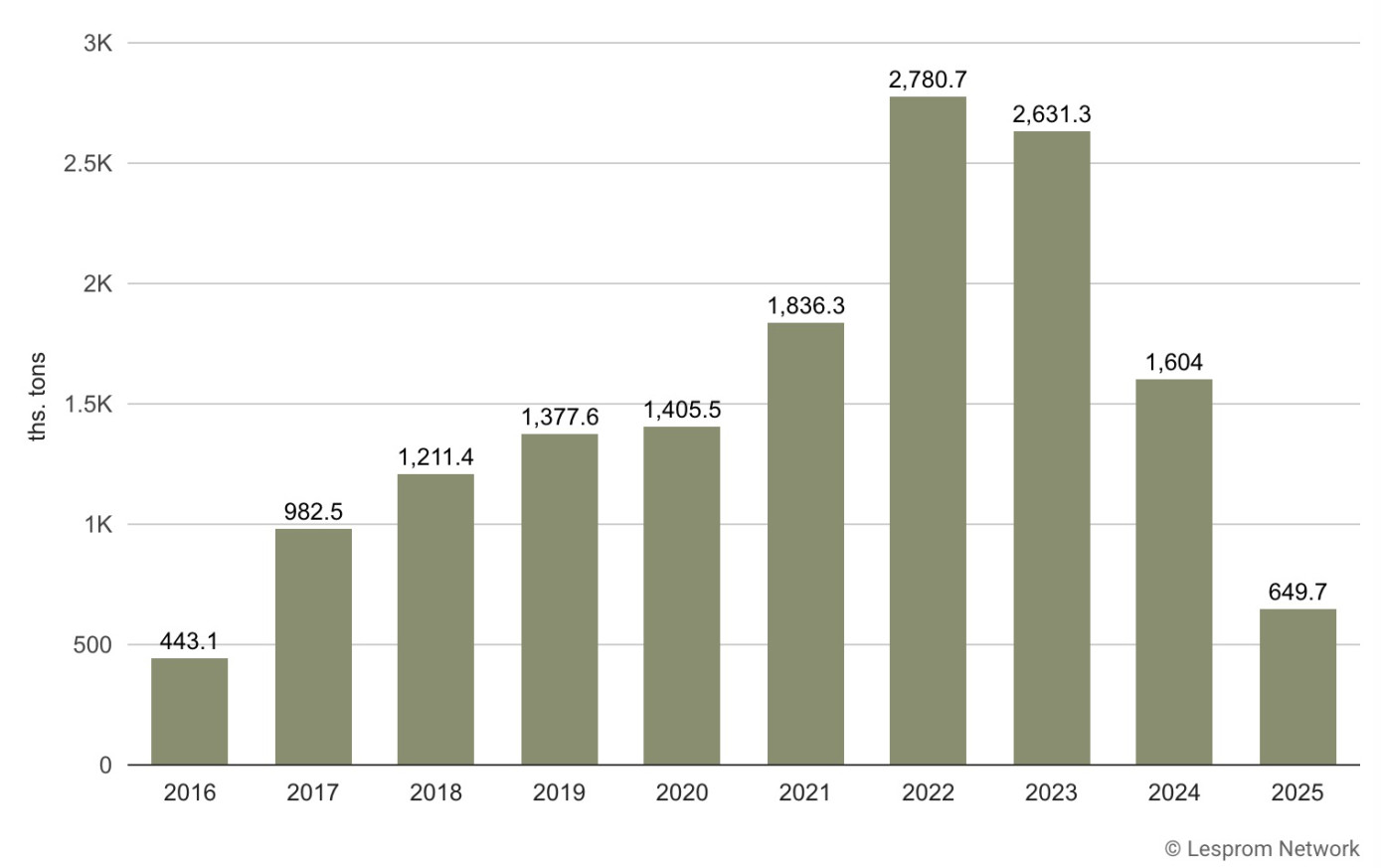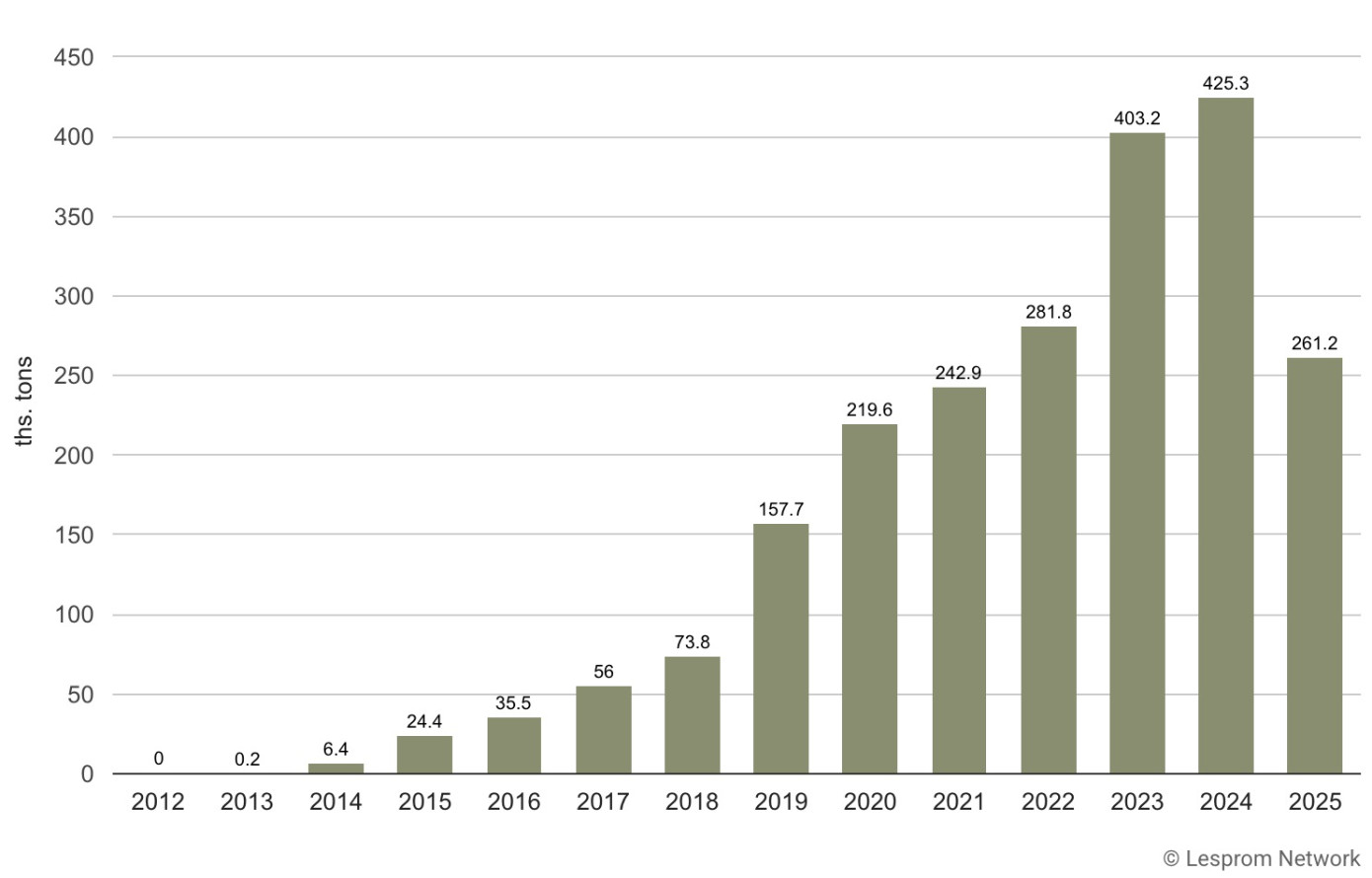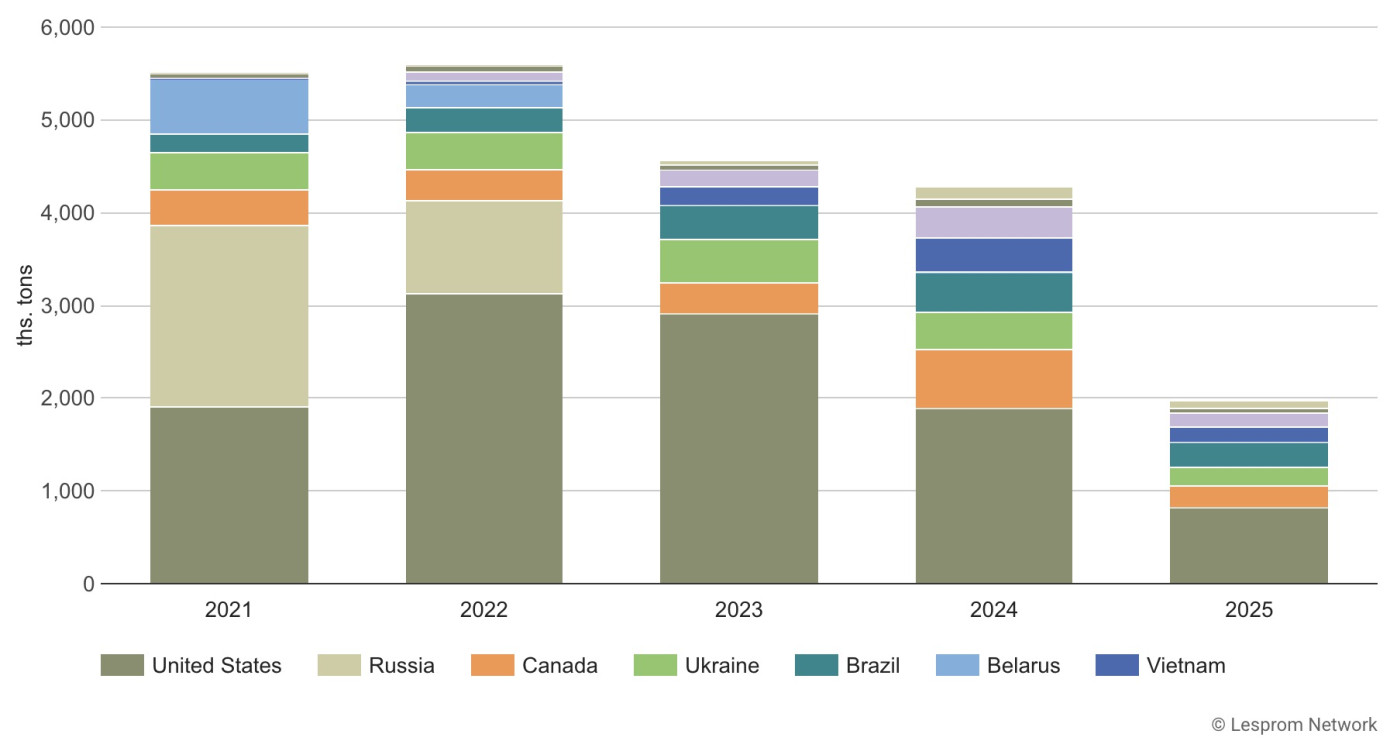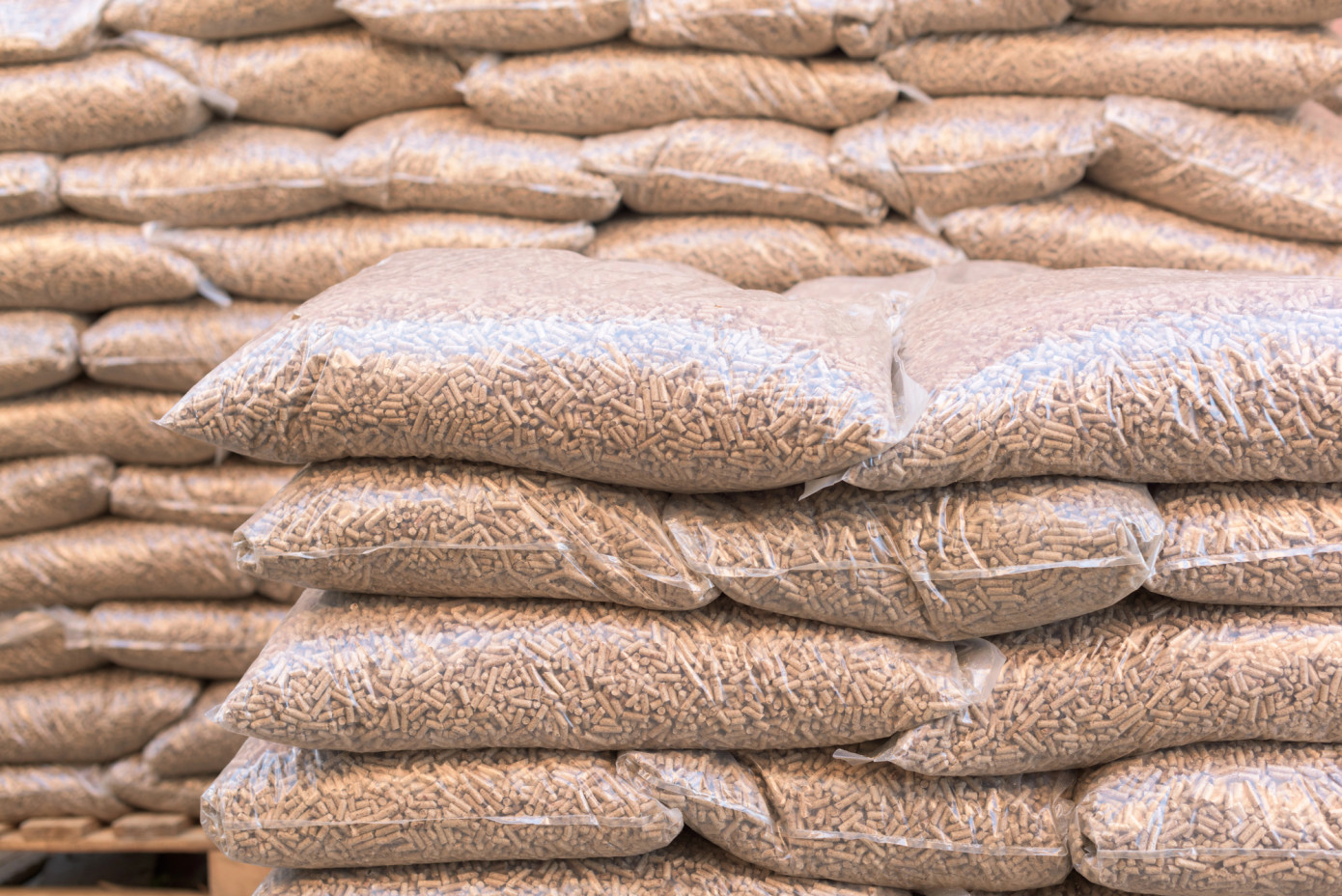Summary
-
EU imported 2.12 million tons of wood pellets in 1H 2025, with average price at $230 per ton.
-
U.S. share dropped to 39%, while Brazil, Ukraine, and Thailand sharply increased supply.
-
Australia entered the EU market with 53 thousand tons.
-
Vietnam held highest average price at $310 per ton.
The United States accounted for 39% of the European Union’s wood pellet imports in the first half of 2025, remaining the largest supplier despite a decline in volume and market share. EU countries imported a total of 2.12 million tons of wood pellets valued at $487 million, with an average import price of $230 per ton, according to Lesprom Analytics. Image: U.S. wood pellet exports to EU, 2016–1H 2025
Exports totaled 649.7 thousand tons in 1H 2025, well below the full-year peak of 2.78 million tons in 2022. / Lesprom Analytics
U.S. wood pellet shipments to the EU dropped by 16.4% to 824 thousand tons, down from 985 thousand tons in the same period of 2024. The export value decreased by 13.7% to $192 million. Despite these declines, the average price of U.S. pellets increased by 3.3% to $233 per ton.
Brazil ranked second with a 12% share after increasing its exports by 31% to 261 thousand tons. Its average price dropped by 7.0% to $197 per ton. Canada followed with an 11% share and shipped 236 thousand tons, up 11.3%. Its export value rose 15.2% to $61 million, and its pellets commanded the second-highest average price at $258 per ton. Image: Brazil’s wood pellet exports to EU, 2012–1H 2025
Shipments reach 261.2 thousand tons in 1H 2025, down from full-year peak of 425.3 thousand tons in 2024 / Lesprom Analytics Image: EU wood pellet imports by country of origin, 2021–1H 2025. U.S. remains top supplier, while imports from Russia drop after 2022 and Brazil, Ukraine, and Vietnam gain share in 2024–2025 / Lesprom Analytics
Ukraine increased its share to 10%, supplying 201 thousand tons, a 31% rise. The country’s export value grew 46% to $38 million, while its average price rose 11.2% to $190 per ton.
Vietnam remained a top-five supplier with an 8% share, though its exports declined by 11.3% to 176 thousand tons. Its average price rose 6.0% to $310 per ton, the highest among all exporters.
Malaysia’s share fell to 6% after a 31% drop in volume to 135.6 thousand tons. Its average price rose to $197 per ton. Thailand increased its exports by 90% to 90 thousand tons, taking a 4% share and raising its value by 103% to $17 million. The country’s average price was $187 per ton.
Australia entered the EU market with 53 thousand tons, matching Norway’s 2% share. Australia’s average price stood at $289 per ton, while Norway’s was $238 per ton based on 53 thousand tons exported.
Bosnia and Herzegovina supplied 33 thousand tons, up 77%, reaching a 2% share. The country’s average price was $203 per ton.
Across all suppliers, the EU’s total import volume rose marginally by 0.3%, while the overall value grew by 2.7%. The average price per ton increased by 2.4% compared to the same period last year.
